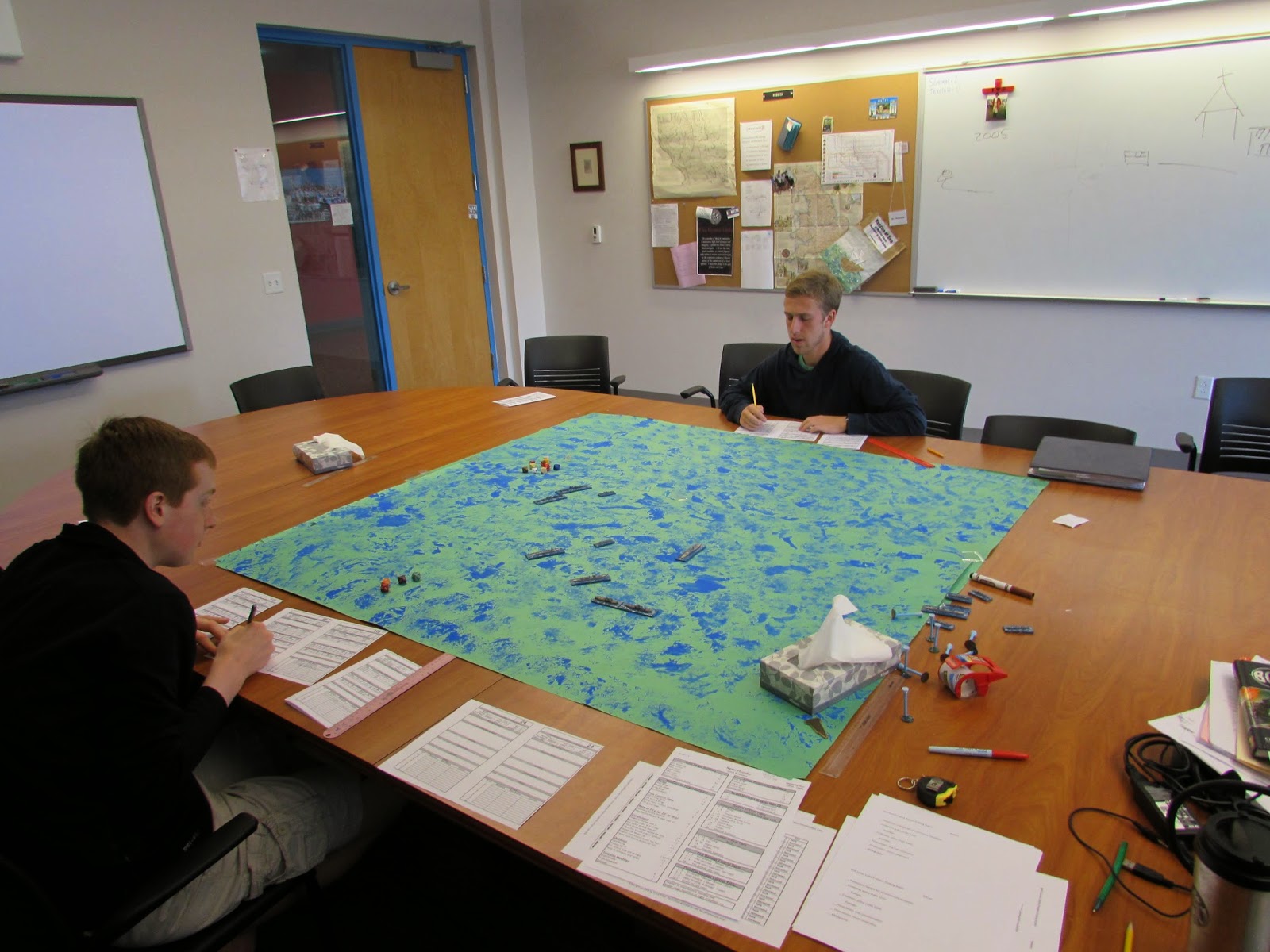After what seems like many weeks (because it was, well, many weeks), my sim games class finally finished our Napoleonics battle. Though on paper it might look like a British walkover (thee routed French brigades to none), it was a lot closer than the results would indicate, as three British brigades were pretty wobbly themselves at the finish. Two better rolls on some French break tests, and teh game could have easily gone the other way.
Anyhow, I don't have any photos of that, so you will have to rely upon my lurid prose to compose a thought-picture of your own. At any rate, there was not a lot of maneuver in the final turns, just a lot of slugging it out and hoping for the best. We wrapped the game up and started on our next simulation: WWII naval, with an adaptation of the Battle of the Komandorski Islands as our scenario.
 |
| I cut linoleum tiles to base the ships, texturing the base with putty, then adding paint and gloss varnish to make it look like water. |
We're gaming at 1/2400 using the Naval Thunder rules and Panzerschiffe miniatures. While Panzerschiffe resin models lack the spectacular detail of the GHQ or Navwar ships, the price is right and they work well as game pieces. The students seemed to think they looked good!
I rely upon our Middle School Art Department for construction paper from rolls. Sadly they were out of blue, so I had to make do with green. I then added blobs of blue poster paint to give an "ocean effect". Doesn't look great, but at least it doesn't look terrible. Had I some white paint in school, I would have added a few whitecaps for detail.
 |
| I made my own splash markers out of golf tees, mounted on pennies and given some drybrush to give the impression of spray. |
My students were shocked at the complexity of the rules relative to Black Powder, and since this is my first toe in the water with these rules, we're taking it slow. On our first turn, the Japanese and American cruisers traded some long range shots. All of the IJN salvos fell short, but two American shells scored lucky hits, and one IJN destroyer suffered damage to its engine room.
 |
| Waves (or in this case, the seam where my two "ocean boards" meet) crash over the bow of an American light cruiser. |

























